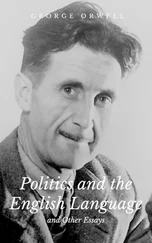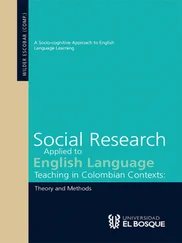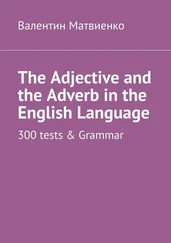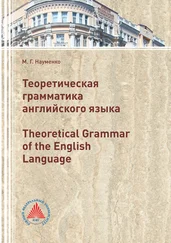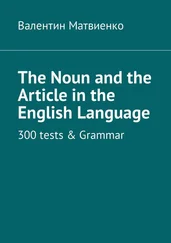In colloquial English – when we are speaking in informal situations – we use special SHORT FORMS for some verbs. So, in Dialogue 1, Vicki says:
I’m Vicki
• I’mis the short form for the FULL FORM I am.
And in Dialogue 3, Paul says:
you’re Mo
• you’reis the short form for the full form you are.
With verbs that have short forms (not only bebut also have, doand some others that we will meet later) we do not normally use the full form in speaking except when we want to put special emphasis on the verb. (But we have to use the full form in TAG RESPONSES –
see next Language point.)
So, for the present tense of bewe have short forms for all persons:
3
Full form
Short form
I am
/a m/
I’m
/ɑim/
you are
/ju: ɑ:r/
you’re
/jɔ:r/
he is
/hi: z/
he’s
/hi:z/
she is
/ʃi: z/
she’s
/ʃi:z/
it is
/t z/
it’s
/ts/
we are
/wi: ɑ:r/
we’re
/wər/
they are
/ðε ɑ:r/
they’re
/ðεər/
Pay attention to the pronunciation of these short forms in British English, and notice that all the full forms have two syllables, while the short forms all have one.
Be careful with the he/she short form ’s– you can’t use it after a name ending in -s, -ch, -sh, -xor -z. So we say: Fred’s here
Fiona’s here
Terry’s here
Brian’s here
John’s here
but
James is here
Rich is here
Trish is here
Max is here
Baz is here
not
James’s here
Rich’s here
Trish’s here
Max’s here
Baz’s here
We will see some more short forms in the next unit. It is important to know how to use them as they form a common and typical feature of colloquial English everywhere.
Exercise 1
Turn the full forms into short forms in these sentences. Be careful
– one of them can’t be changed to a short form! The first one has been done for you.
1 Brian is in work today.
Brian’s in work today.
2 Hello, I am Fred.
____________________ .
3 Sue is over there.
____________________ .
4
4 Terry is by the door.
____________________ .
5 They are in the kitchen.
____________________ .
6 Chris is next door.
____________________ .
7 We are in town tomorrow.
____________________ .
8 Stuart is at his desk.
____________________ .
9 My brother is on holiday
at the moment.
____________________ .
10 This CD is broken.
____________________ .
Language point 2 – question tags and
tag responses
In Dialogue 3, Paul says: You’re Mo, aren’t you?, and Mo answers: Yes, I am. In English, when we want to check that something we have said is true, we can add a QUESTION TAG after a STATEMENT which invites the other speaker to confirm what has been said. There are many different types of tag, so for now we will just look at one.
Paul makes a statement:
You’re Mo
but he wants to make sure this is true, so he adds: aren’t you?
so that Mo can tell him that he’s right:
Yes, I am
Here are some more examples of TAGGED STATEMENTS:
You’re a nurse, aren’t you?
You’re James, aren’t you?
You’re a computer technician, aren’t you?
You’re from Germany, aren’t you?
Mo responds to the tag using the FULL FORM of the verb be: Yes, I am; we don’t use the short form in tag responses, so it is wrong to say ‘Yes, I’m’. We will look at question tags in more detail in Unit 2.
5
Exercise 2
Add the correct question tags to these sentences – the first one has been done for you.
1 You’re a teacher, aren’t you?
2 Simon’s a footballer, ______ ?
3 Suzie’s a nurse, ______ ?
4 Pete and Dave are lawyers, ______ ?
5 Ela’s from Poland, _____ ?
6 This food’s delicious, ____ ?
7 We’re a bit late, ____ ?
8 It’s cold this morning, ____ ?
9 You’re from Finland, ____ ?
10 Ilse’s from Austria, ____ ?
Dialogue 4
Rosemary wants to introduce Justine and Tim to Stuart, who doesn’t know them.
ROSEMARY:
Stuart, this is Justine.
STUART:
Hello, Justine.
JUSTINE:
Pleased to meet you, Stuart.
ROSEMARY:
And this is Tim.
TIM:
Hello, Stuart.
Dialogue 5
Justine introduces Vicki to Chris.
JUSTINE:
Vicki – do you know Chris?
VICKI:
I don’t think so.
JUSTINE:
Chris, this is Vicki.
CHRIS:
Hello Vicki.
VICKI:
Hello Chris. Pleased to meet you.
Language point 3 – introducing people
You can find out if someone knows someone else, or introduce two people who don’t know each other, by asking one of them Do you know . . .?followed by the name of the other person.
6
Vicki answers with I don’t think so, not because she isn’t sure but because this is a more indirect way of saying No– it would sound rather short just to say ‘No’. Let’s look at another example of two people being introduced to each other:
Dialogue 6
Stuart is seeing if he can remember the names of everyone in the room.
STUART:
Now then, are you Helen?
HELEN:
Yes, I am.
STUART:
And is that Su by the door?
HELEN:
Yes, it is.
Stuart turns to another person.
STUART:
And are you Jenny?
JENNY:
Yes, I am!
Stuart points to someone else.
STUART:
And is she Ann?
JENNY:
Yes she is! Well done!
Dialogue 7
Su is talking to Shamira in the office.
SU:
Is the coffee ready?
SHAMIRA:
Yes, it is.
SU:
Good. Where’s the sugar?
SHAMIRA:
It’s over there on the table.
Su looks for the sugar.
SU:
Are you sure, Shamira?
Shamira looks as well.
SHAMIRA:
Oh no – here it is, on Tim’s desk.
SU:
Is Tim off today?
SHAMIRA:
Yes, he is. He’s ill.
SU:
Poor Tim. Coffee for two, then?
7
Language point 4 – questions with the
verb ‘be’
We turn statements using the verb beinto questions by simply changing the order of the pronoun ( I, you, he, she, it, etc.) and verb in the full form. So:
Читать дальше


